Barrett Firearms MRAD .338 Lapua Mag Bolt Action Rifle, Black Cerakote – 14355 For Sale
$5,970.98
The Barrett Firearms MRAD .338 Lapua Mag Bolt Action Rifle, Black Cerakote – 14355 is a cutting-edge firearm crafted for precision and adaptability, whether on the range or in active duty. Its engineering marvel lies in a monolithic 7000-series aluminum upper receiver featuring a full-length M1913 Picatinny top rail for enhanced long-range accuracy. Designed for versatility, it includes mounting slots on its handguard and a user-changeable barrel system that allows quick caliber changes without a gunsmith. The rifle’s adjustable match-grade trigger module, folding stock with tool-less adjustments, and ambidextrous controls make it suitable for various shooters. Additional features like a high-efficiency muzzle brake, relief cut magazine well, and an oversized trigger guard add to its robust design. Finished in Black Cerakote with an anodized surface for durability, the MRAD stands out for both competitive and tactical applications, offering unmatched precision and adaptability.
Can civilians buy Barrett-Mrad?
Yes, civilians can purchase the Barrett MRAD (Multi-Role Adaptive Design) rifle. However, they must comply with federal, state, and local laws regarding the purchase of firearms. This typically includes passing background checks and acquiring any necessary permits or licenses. Regulations can vary widely depending on the jurisdiction, so it’s important for potential buyers to be aware of the specific laws in their area.
How far can a Barrett-Mrad shoot?
The Barrett MRAD (Multi-Role Adaptive Design) sniper rifle is designed for long-range shooting and is capable of effective accuracy at distances of up to 1,500 to 2,000 meters (approximately 1,640 to 2,187 yards), depending on factors like ammunition type, environmental conditions, and shooter skill.
Is the MRAD a good rifle?
The MRAD (Multi-Role Adaptive Design) produced by Barrett is generally well-regarded in the firearm community. It is known for its versatility, precision, and adaptability, making it a popular choice for military, law enforcement, and civilian long-range shooting. It features a modular design that allows users to switch barrels and calibers easily, which adds to its adaptability. The build quality, accuracy, and ergonomic design are often praised. However, the best rifle for you depends on your specific needs, preferences, and budget. It’s important to handle and test any firearm personally to determine if it’s the right fit for you.
What is the range of the Barrett Mrad sniper rifle?
The Barrett MRAD (Multi-Role Adaptive Design) sniper rifle has an effective range of approximately 1,500 to 2,000 meters, depending on the ammunition and conditions.
Is it legal to own a 50 cal sniper rifle?
The legality of owning a .50 caliber sniper rifle depends on the country or jurisdiction you are in, as firearm laws vary widely around the world.
In the United States, for example, federal law allows the ownership of .50 caliber rifles, but regulations can vary by state. Some states have implemented restrictions or bans on the possession of certain .50 caliber firearms. It’s essential to check both federal and local laws to understand the specific regulations in your area.
In other countries, ownership of such firearms might be more tightly controlled or prohibited altogether. It’s crucial to consult the specific firearm legislation of the country or region you are in to determine the legal status.
If you’re considering purchasing or owning such a firearm, it’s advised to consult legal experts or local law enforcement to ensure compliance with all applicable laws and regulations.
Are Barrett rifles worth the money?
Determining whether Barrett rifles are worth the money depends on various factors including the intended use, budget, and personal preferences. Barrett rifles, known for their high-quality craftsmanship and long-range precision, are often considered premium firearms. They are typically favored by military and law enforcement agencies, as well as civilian enthusiasts who value their accuracy, power, and durability.
For long-range shooting or applications requiring a reliable and powerful rifle, a Barrett might be worth the investment. However, their high cost can be a drawback for those on a tight budget or those who do not need the specific features and capabilities Barrett offers. Ultimately, it’s essential to evaluate the specific needs and priorities to determine if the investment in a Barrett rifle is justified.
What sniper did Chris Kyle use?
Chris Kyle, the American sniper and former Navy SEAL, primarily used the McMillan TAC-338 sniper rifle during his service.
How much is 1 MRAD at 100 yards?
1 MRAD (milliradian) at 100 yards is approximately 3.6 inches. The conversion is based on the fact that there are 1,000 milliradians in a full circle, and at 100 yards, 1 MRAD subtends roughly 3.6 inches.
What is the most accurate military sniper rifle?
Determining the “most accurate” sniper rifle can be subjective and depends on various factors such as the environment, the shooter’s skill, and the specific needs of military operations. However, the Accuracy International AX50, Barrett MRAD, and DSR-Precision DSR 50 are often cited for their high accuracy in military settings.
What is the most accurate rifle in the world?
The title of the “most accurate rifle in the world” is subjective and can vary depending on specific criteria like use case (e.g., hunting, competition, military) and conditions (e.g., environment, ammunition). However, rifles such as the Accuracy International AXSR, Sako TRG 22/42, and the Barrett MRAD are often cited for their exceptional accuracy. Additionally, custom-built rifles designed for precision and long-range shooting can also achieve extraordinarily high levels of accuracy, often surpassing commercial models.
What round do military snipers use?
Military snipers typically use a variety of rounds, depending on their specific mission requirements and the weapon system they are utilizing. Common calibers include:
1. **7.62×51mm NATO (.308 Winchester)**: Used in rifles like the M24 and M40.
2. **.300 Winchester Magnum**: Used for longer-range shooting.
3. **.338 Lapua Magnum**: Preferred for very long-range engagements.
4. **12.7×99mm NATO (.50 BMG)**: Used in anti-materiel rifles like the Barrett M82 for extreme long-range and anti-equipment roles.
The choice of round can depend on several factors such as range, target, and specific operational needs.
Who uses Barrett Mrad?
Barrett MRAD (Multi-Role Adaptive Design) is typically used by military and law enforcement personnel, as well as professional marksmen and long-range shooting enthusiasts. It is a high-precision sniper rifle designed for adaptability and modularity, making it suitable for various tactical and precision shooting applications.
Can civilians own military grade weapons?
The ability for civilians to own military-grade weapons varies significantly depending on the country and its specific laws and regulations. In many countries, military-grade weapons are heavily restricted or outright banned for civilian ownership. For example:
1. **United States**: Federal law prohibits civilians from owning fully automatic firearms manufactured after May 19, 1986. Firearms classified as “military-grade” often fall under this category. However, civilians can own certain semi-automatic firearms, and older fully automatic weapons may be owned by civilians, but they require extensive background checks, registration, and the payment of taxes.
2. **European Union**: EU member states generally have strict regulations regarding firearm ownership. Military-grade weapons are often banned, with only a few exceptions, such as for collectors who typically require special licenses.
3. **Australia**: After the Port Arthur massacre in 1996, Australia implemented stringent gun laws that restrict civilian ownership of many types of firearms, including those classified as military-grade.
4. **Canada**: Military-grade automatic firearms are prohibited, and there are strict licensing requirements for owning other types of firearms.
In many countries, owning these types of weapons is limited to the military, certain law enforcement agencies, and sometimes licensed individuals or entities for specific purposes like collection, film production, or research. Always refer to local laws for precise and current information regarding firearm ownership.
Who can buy a ghost gun?
As of my last update, ghost guns, which are firearms assembled from kits or 3D-printed parts and lack serial numbers, fall under varying legal scrutiny depending on the jurisdiction. In the United States, federal regulations require commercial manufacturers of ghost gun kits to be licensed and include serial numbers on key components. Buyers may be subject to background checks under revised regulations. However, the rules can vary widely depending on state laws. Some states have stricter regulations, including outright bans on ghost guns, while others may have fewer restrictions.
It’s essential to check the specific laws in your area, as they can change frequently and may differ significantly from federal guidelines.
Can a civilian own a TAC 50?
Yes, a civilian can legally own a TAC-50 rifle in the United States, provided they comply with federal, state, and local laws regarding firearm ownership. The TAC-50 is a type of bolt-action sniper rifle, and like other firearms, its purchase typically requires passing a background check and adhering to any specific regulations concerning the purchase and ownership of high-caliber rifles. It’s important for potential buyers to check the specific laws in their state and locality, as regulations can vary significantly.
| Product Line | MRAD |
|---|---|
| Action | Bolt |
| Magazine Type | Polymer Relief Cut Drop Free |
| Stock | Adjustable Folding Right Side |
| Trigger Type | Fully Adjustable |
| Muzzle Type | Muzzle Brake |
| Twist | 1 |
| Hand Orientation | Right |
| Safety | Thumb Operated, Ambidextrous |
| Receiver Material | Aluminum |
| Stock Material | Synthetic |
| Receiver Finish | Black Cerakote |
| Stock Finish | Black Cerakote |
| Overall Length | 47.4" |
| Barrel Type | Fluted |
Be the first to review “Barrett Firearms MRAD .338 Lapua Mag Bolt Action Rifle, Black Cerakote – 14355” Cancel reply
Related products
Barrett Firearms MRAD
Barrett Firearms MRAD 6.5 Crd Bolt Action Rifle, Tungsten Gray Cerakote – 14449
Barrett Firearms MRAD
Barrett Firearms MRAD .338 Lapua Mag Bolt Action Rifle, Tungsten Gray Cerakote – 14388
Barrett Firearms MRAD
Barrett Firearms MRAD .308 Win/7.62 Bolt Action Rifle, Tungsten Gray Cerakote – 14370
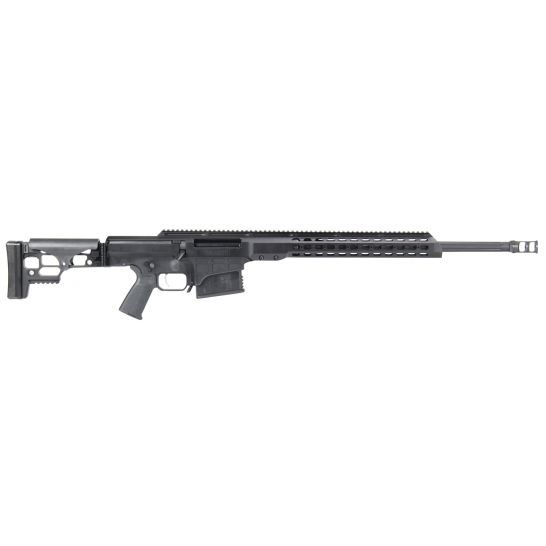
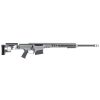
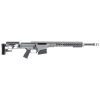
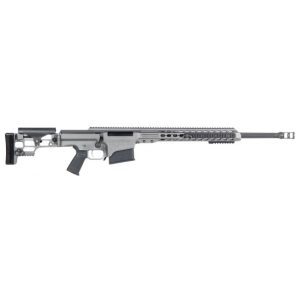
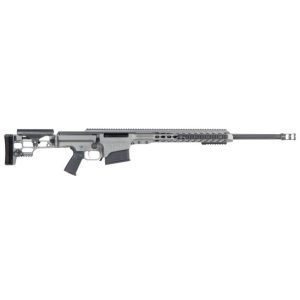
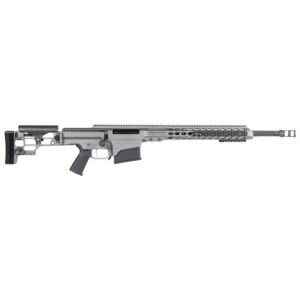
Reviews
There are no reviews yet.